Spice up your Mexican recipe repertoire with this Mexican Pork Tenderloin Adobo! It’s easy to make and super flavorful. Perfect for a Mexican-themed party or for an out-of-the-ordinary dinner.
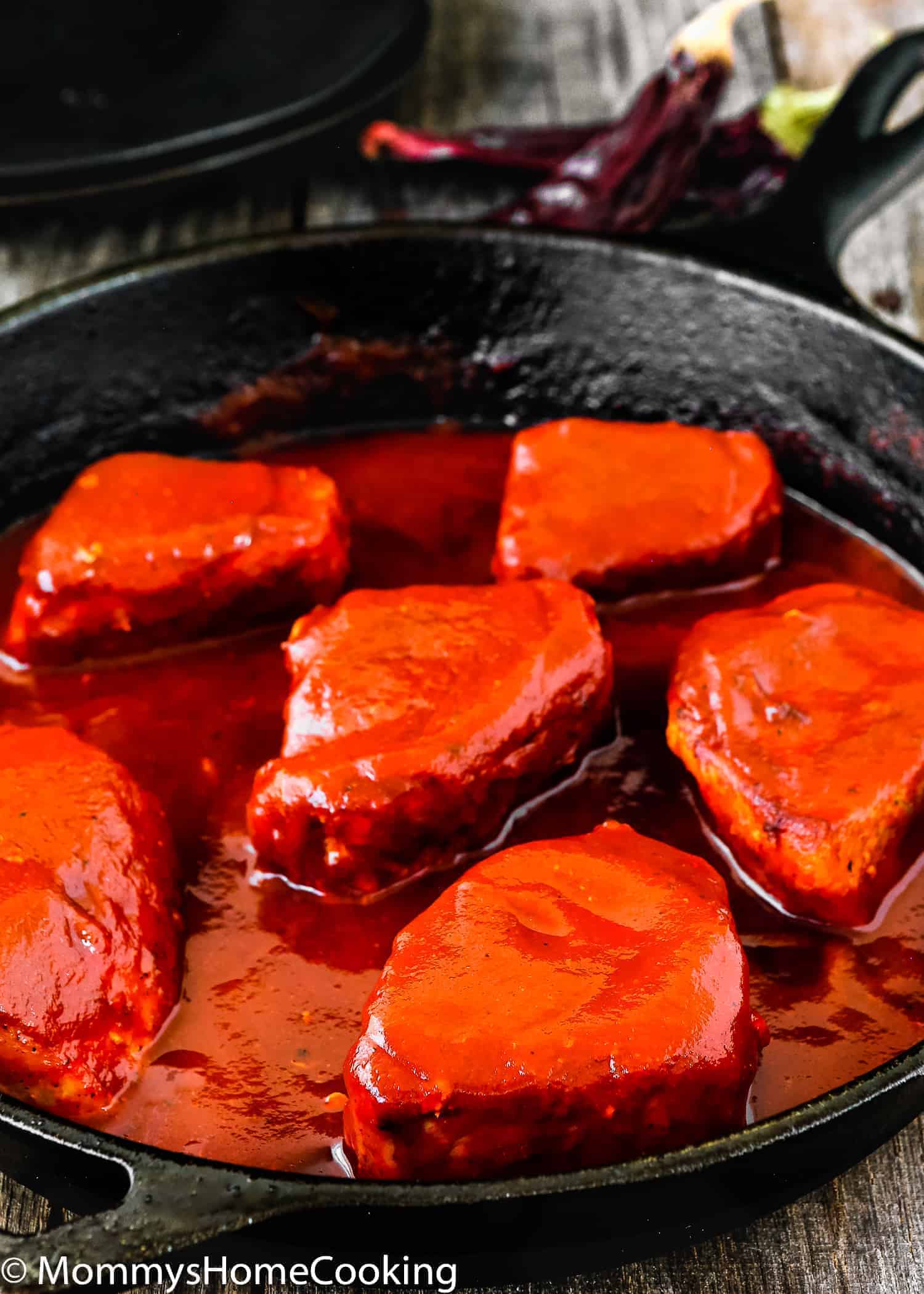
This Mexican Pork Tenderloin Adobo will knock your socks off!!
The first time I tried Mexican adobo sauce was a few weeks ago in a very popular Mexican restaurant in my area. I was so impressed with this flavorful sauce that I decided that I would recreate it for the blog.
So, after a few tests, this awesome Mexican Pork Tenderloin Adobo was born.
This Mexican Pork Tenderloin Adobo is supremely tasty and easy to make! It requires little effort and produces big results. I hope you give it a try soon.
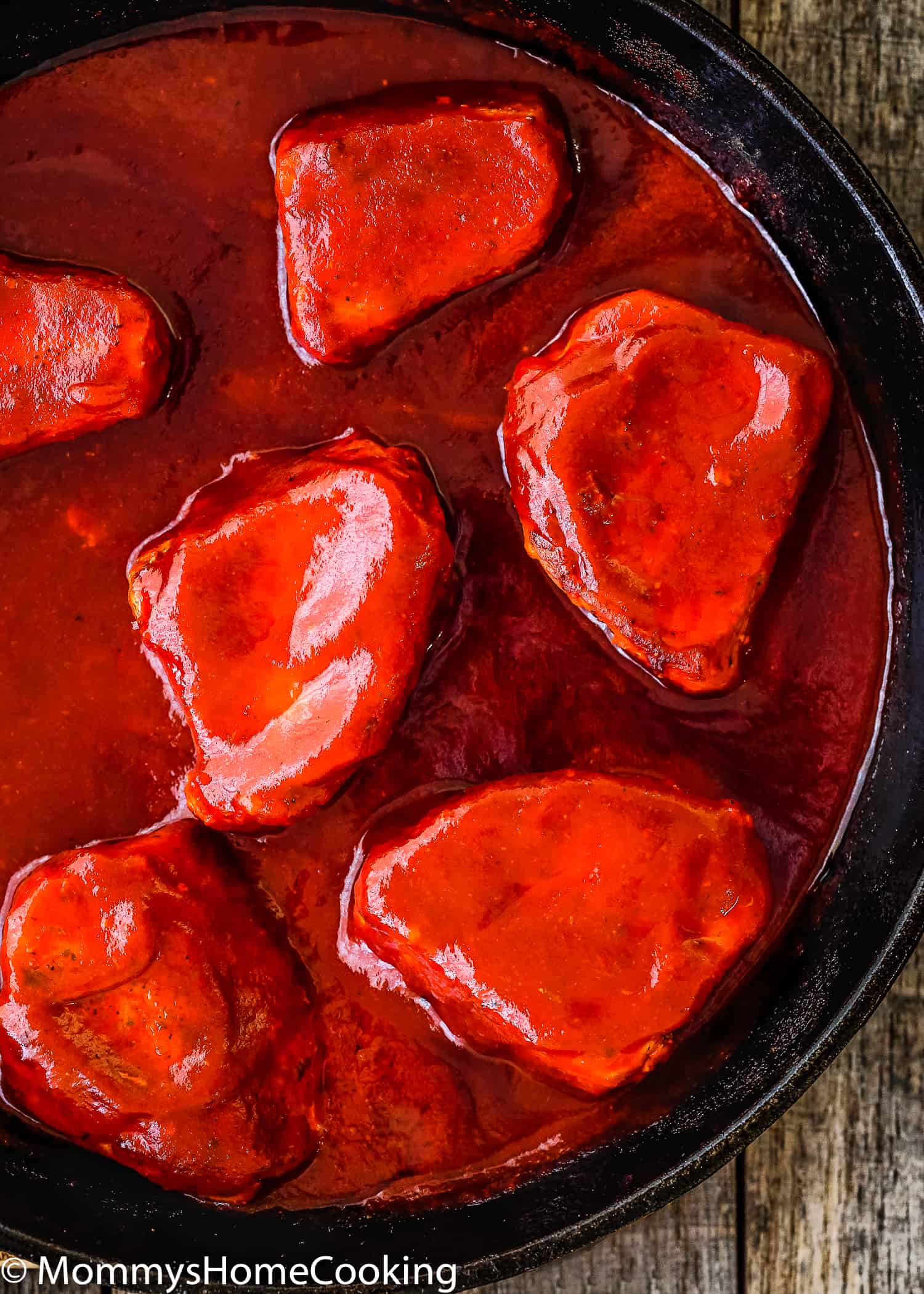
Step By Step Recipe Photo Tutorial
1 – Make the Abodo Sauce
- Place the 3 cups of chicken stock, guajillo peppers, garlic, and onion in a medium saucepan. Bring to a boil over medium-high heat. Reduce heat to low and simmer for 20 – 30 minutes. Remove from heat and let it cool for 5 minutes.
- Place mixture in a blender or food processor, and blend until smooth. Strain the mixture through a fine-mesh sieve; discard solids.
- Stir in honey, salt, cumin, oregano, cinnamon, black pepper, vinegar, and the remaining ½ cup of chicken stock. Mix until well combined. Set aside.
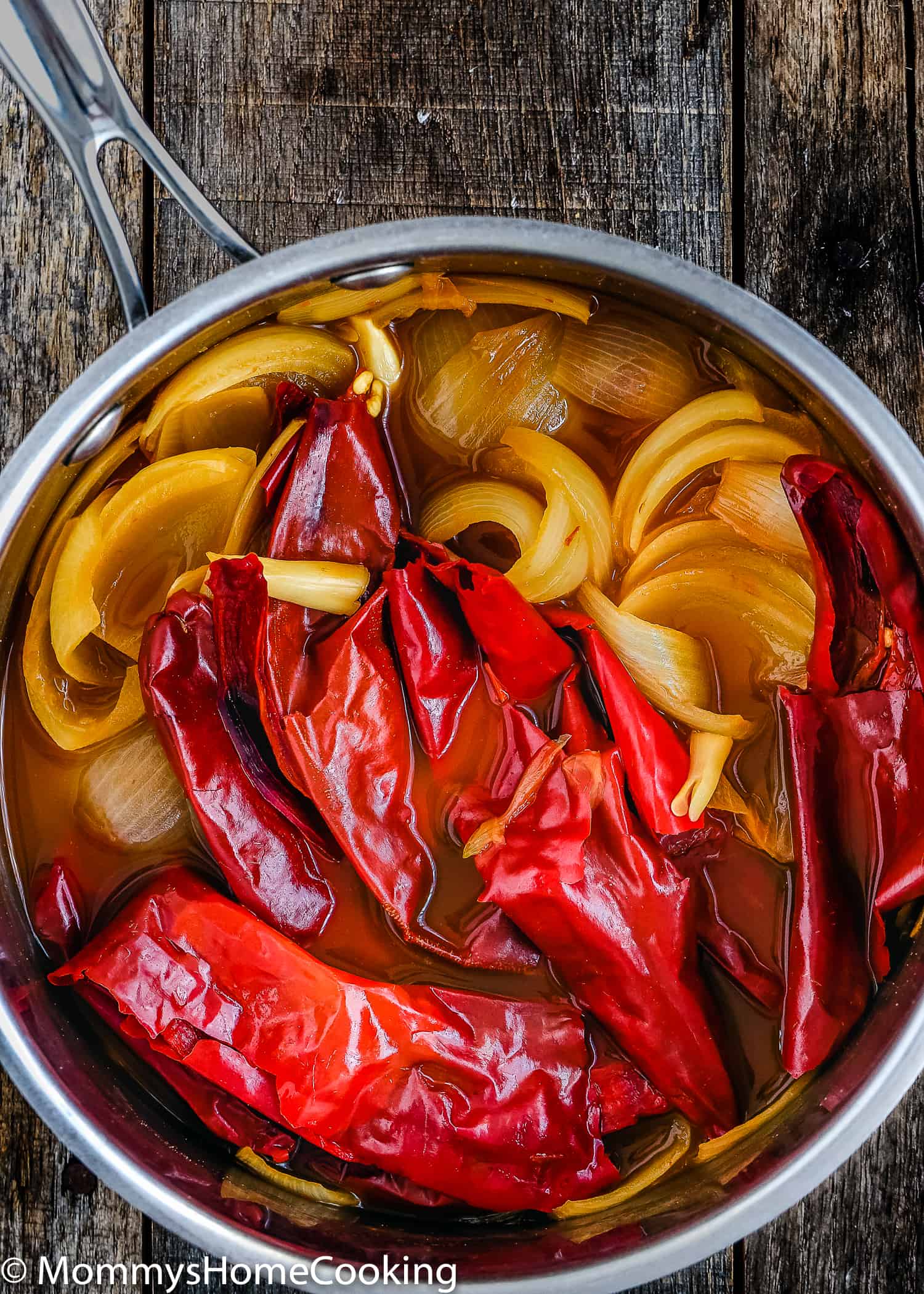
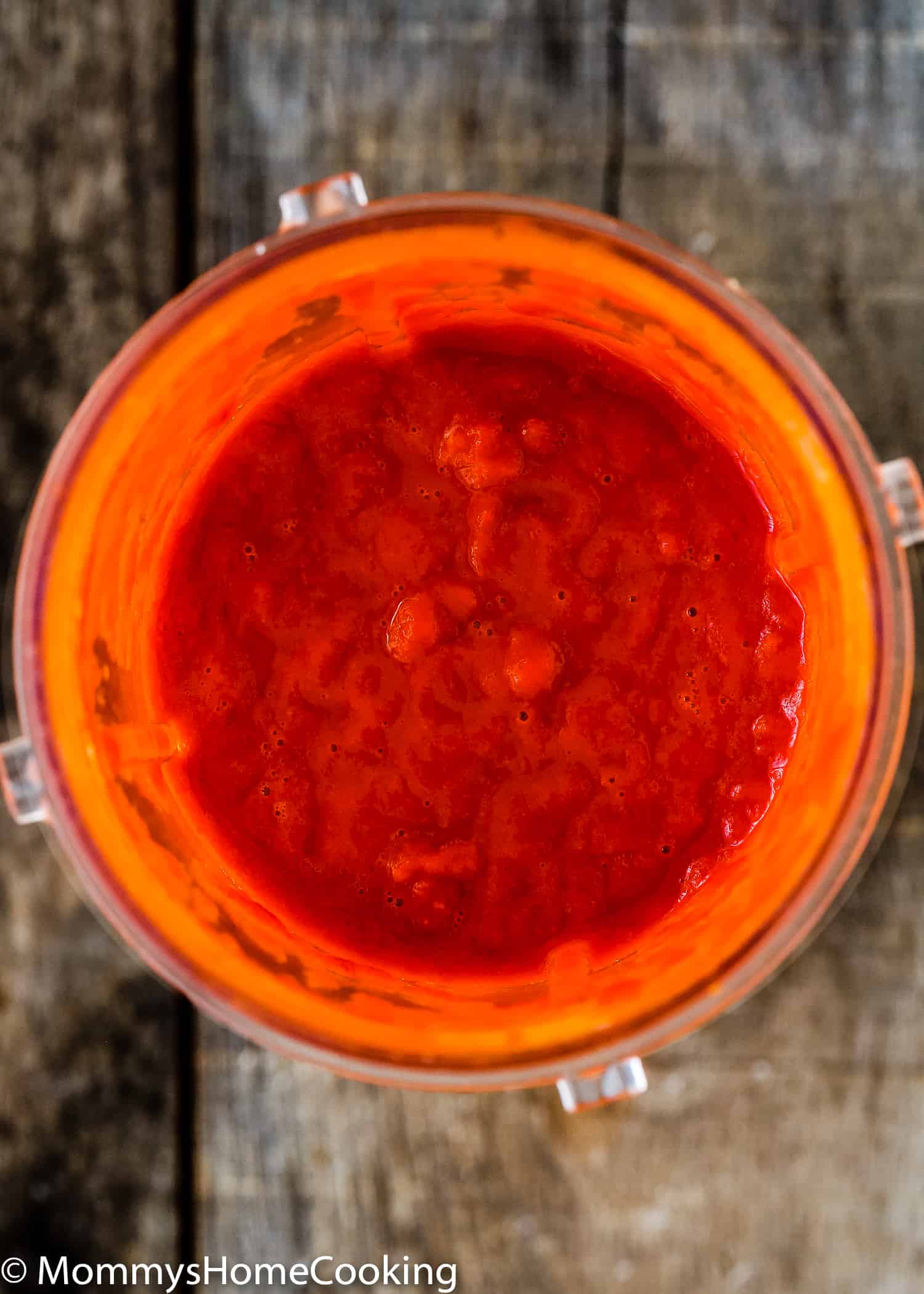
2 – Prepare the Pork
- Sprinkle pork with salt, black pepper, and oregano.
- Heat oil in a large skillet over medium-high heat. Add pork and cook until browned on all sides.

3 – Add tha Adobo Sauce
Stir in sauce; reduce heat to low. Simmer for 15 minutes, stirring often, or until the pork is cooked through and reaches an internal temperature of 145º F.

Adapt the Level of Spiciness to Your Taste
The level of spiciness will depend on the dried chile peppers you use.
For a mild use 7 guajillos + 1 ancho.
For moderate use 5 gujillos + 3 anchos.
For hot use 5 anchos + 3 guajillos.
Storing & Freezing Instructions
Store: The finished dish can be refrigerated for about 1 week.
Freeze: All you have to do is transfer the cooked pork with the sauce into a freezer-safe container or bag and freeze for up to 3 months. Thaw in the fridge overnight before reheating.
Frequently Asked Questions
What is Mexican Adobo?
Mexican Adobo is a classic sauce made with a combination of dried chile peppers, usually guajillo and ancho. It can be used as a sauce, marinade, or as a condiment.
How Spicy is Mexican Abodo Sauce?
The level of spiciness will depend on the dried chile peppers you use.
For a mild use 7 guajillos + 1 ancho.
For moderate use 5 guajillos + 3 anchos.
For hot use 5 anchos + 3 guajillos.
How to make Mexican Adodo?
Place the 3 cups chicken stock, dried peppers, garlic, and onion in a medium saucepan. Bring to boil over medium-high heat. Reduce heat to low and simmer for 20 – 30 minutes. Remove from heat and let it cool for 5 minutes. Place mixture in a blender, or food processor, and blend until smooth. Strain mixture through a fine-mesh sieve; discard solids. Stir in honey, salt, cumin, oregano, cinnamon, and black pepper and the remaining ½ cup of chicken stock. Mix until well combined.
How do you cook with dried chile peppers?
Because chile peppers contain volatile oils is highly recommended that you wear plastic or rubber gloves. Otherwise, the oil residue in your hands can burn your skin and/or eyes.
- Cut off the top of the chile peppers, make a single cut lengthwise, then open the chile peppers and discard seeds and veins.
- Heat a skillet over medium-high heat and roast the peppers about 30-60 seconds per side to bring them back to life.
- Place the chile peppers into a bowl and cover with boiling water. Let the chile peppers reconstitute for 20-30 minutes
- Remove from water and use as needed.
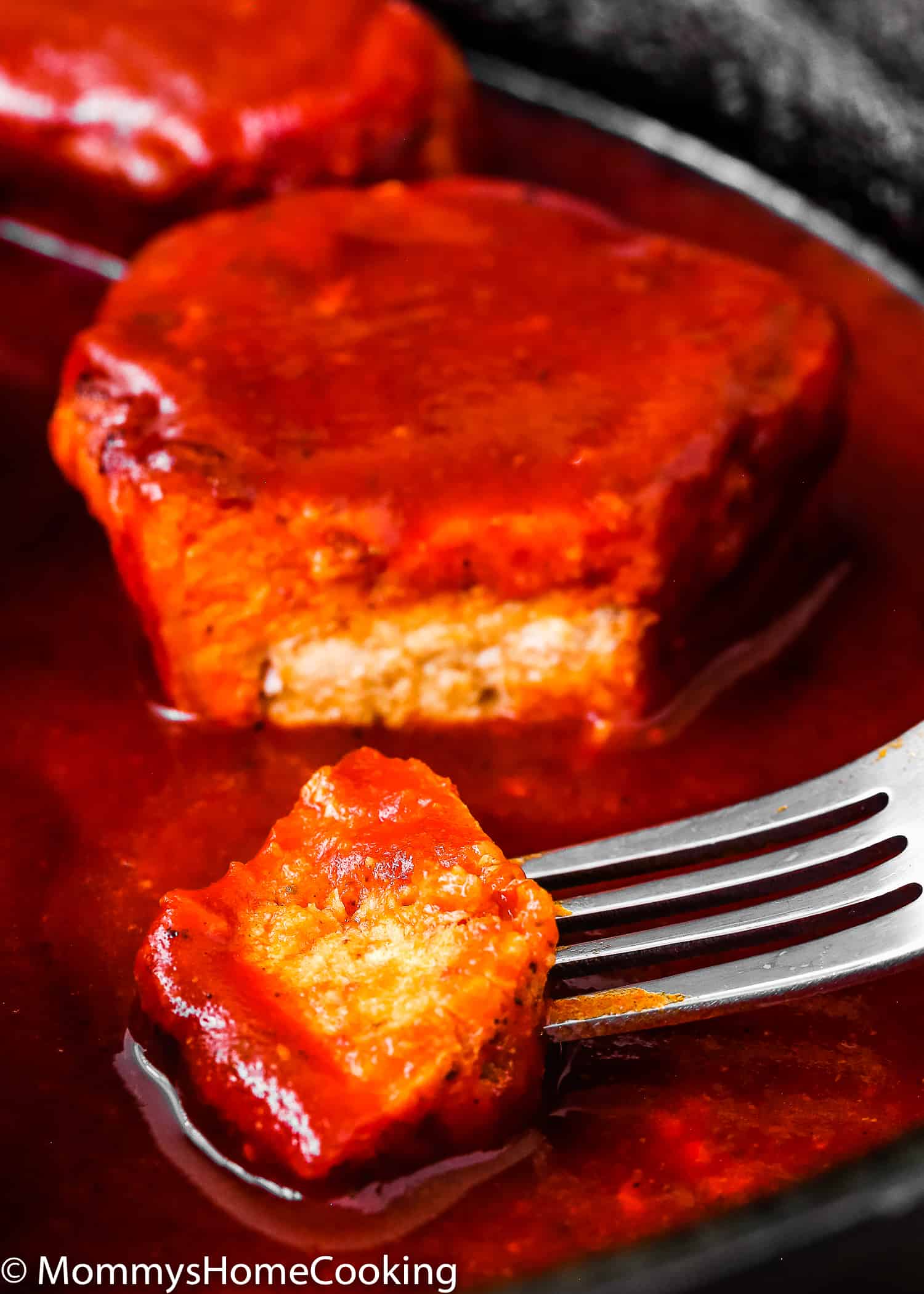
More Mexican-Inspired Recipes
Check out this Instant Pot Mexican Pulled Pork or these Mexican Short Ribs. Not a pork fan? No problem! Try these Chicken and Corn Enchiladas. Serve with an Easy Mexican Rice and some Mango Guacamole, and don’t forget the Margaritas …Salud!!
❤️ Love what you see? JOIN my Private Baking Club. Also, SUBSCRIBE to Mommy’s Home Cooking, so you’ll never miss a recipe! And FOLLOW along on Instagram, Pinterest, and Facebook for more fun!

Mexican Pork Tenderloin Adobo
Ingredients
Adobo sauce:
- 3 1/2 cups chicken stock, divided
- 7 dried guajillo chile peppers, stemmed and seeded (see notes)
- 1 dried ancho chile pepper, stemmed and seeded (see notes)
- 6 garlic cloves
- 2 onions, chopped
- 2 teaspoons honey
- 1 teaspoon kosher salt
- ½ teaspoon ground cumin
- ½ teaspoon dried oregano
- ¼ teaspoon cinnamon
- ¼ teaspoon black pepper
- 2 tablespoons apple cider vinegar
Also:
- 2 – 3 lb pork tenderloin, cut into 2 -3 inches pieces
- Kosher salt and black pepper
- 2 teaspoons dried oregano
- 2 tablespoons olive oil
Instructions
Make the Adobo Sauce:
- Place the 3 cups chicken stock, guajillo peppers, garlic, and onion in a medium saucepan. Bring to boil over medium-high heat. Reduce heat to low and simmer for 20 – 30 minutes. Remove from heat and let it cool for 5 minutes.
- Place mixture in a blender, or food processor, and blend until smooth. Strain mixture through a fine-mesh sieve; discard solids.
- Stir in honey, salt, cumin, oregano, cinnamon, black pepper, vinegar and the remaining ½ cup of chicken stock. Mix until well combined. Set aside.
Cook the Pork:
- Sprinkle pork with salt, black pepper, and oregano.
- Heat oil in a large skillet over medium-high heat. Add pork and cook until browned on all sides.
- Stir in sauce; reduce heat to low. Simmer for 15 minutes, stirring often, or until the pork is cooked through and reach an internal temperature of 145º F.
- Sever hot with rice, if desired.
